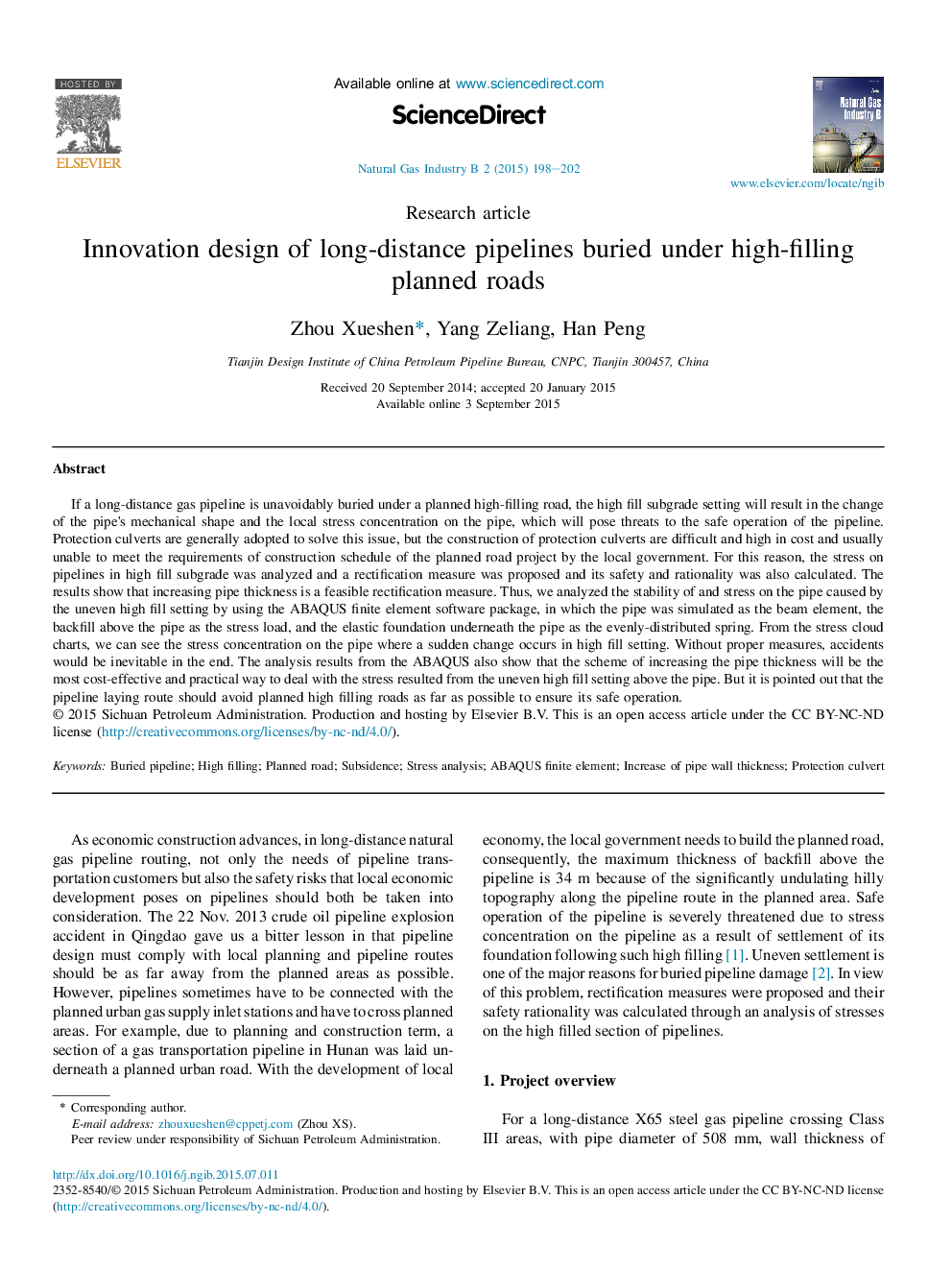| Article ID | Journal | Published Year | Pages | File Type |
|---|---|---|---|---|
| 1747780 | Natural Gas Industry B | 2015 | 5 Pages |
If a long-distance gas pipeline is unavoidably buried under a planned high-filling road, the high fill subgrade setting will result in the change of the pipe's mechanical shape and the local stress concentration on the pipe, which will pose threats to the safe operation of the pipeline. Protection culverts are generally adopted to solve this issue, but the construction of protection culverts are difficult and high in cost and usually unable to meet the requirements of construction schedule of the planned road project by the local government. For this reason, the stress on pipelines in high fill subgrade was analyzed and a rectification measure was proposed and its safety and rationality was also calculated. The results show that increasing pipe thickness is a feasible rectification measure. Thus, we analyzed the stability of and stress on the pipe caused by the uneven high fill setting by using the ABAQUS finite element software package, in which the pipe was simulated as the beam element, the backfill above the pipe as the stress load, and the elastic foundation underneath the pipe as the evenly-distributed spring. From the stress cloud charts, we can see the stress concentration on the pipe where a sudden change occurs in high fill setting. Without proper measures, accidents would be inevitable in the end. The analysis results from the ABAQUS also show that the scheme of increasing the pipe thickness will be the most cost-effective and practical way to deal with the stress resulted from the uneven high fill setting above the pipe. But it is pointed out that the pipeline laying route should avoid planned high filling roads as far as possible to ensure its safe operation.
